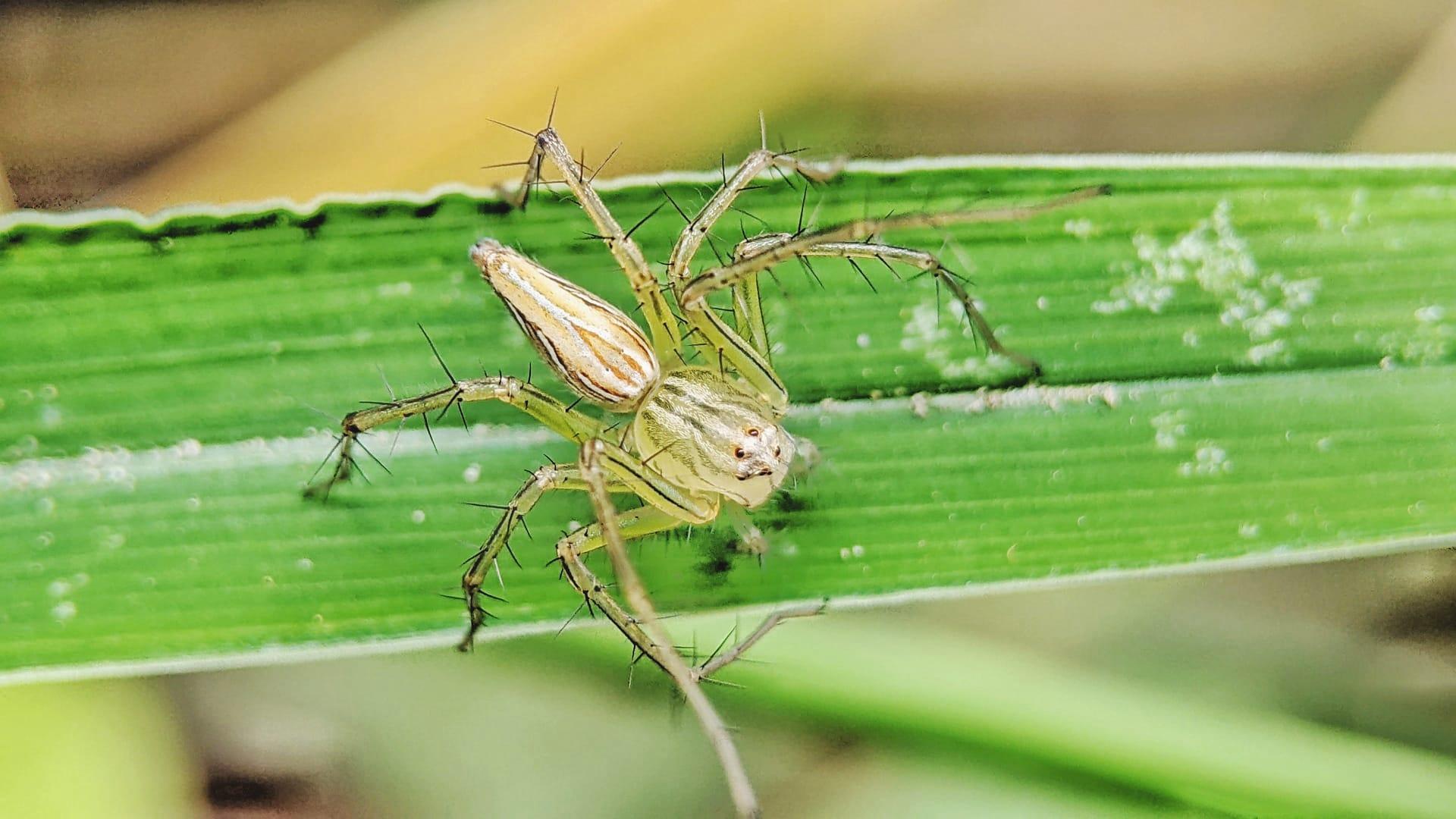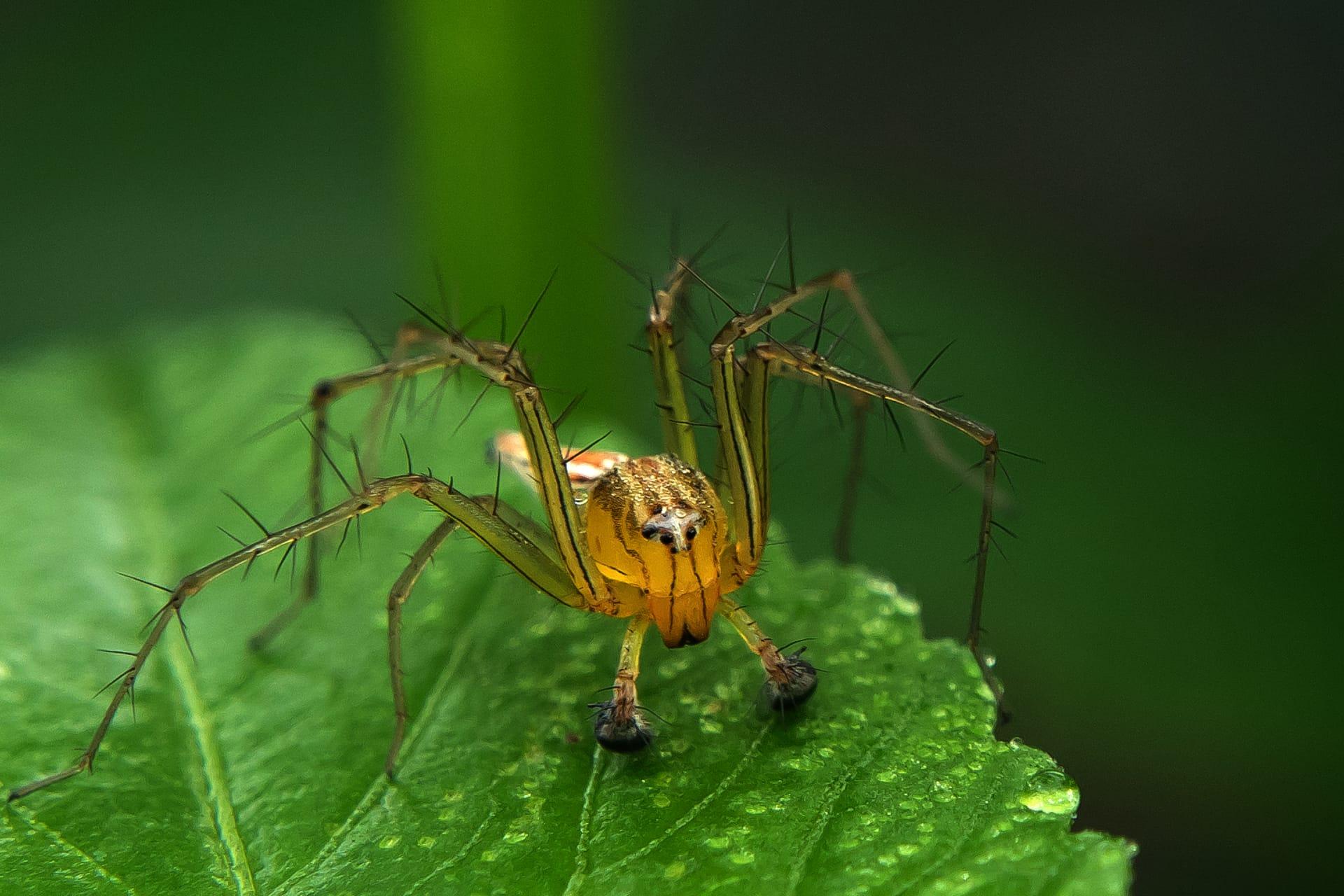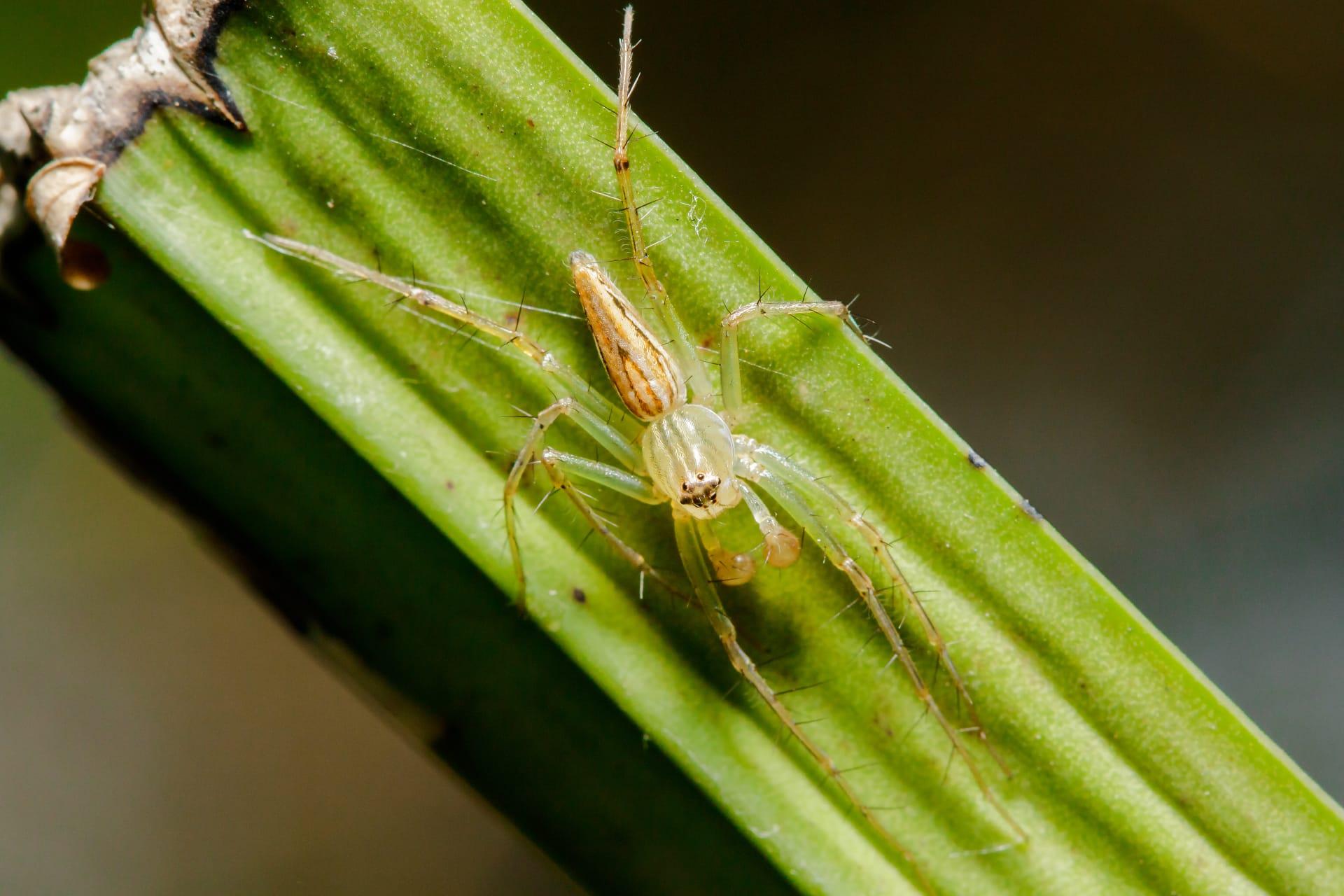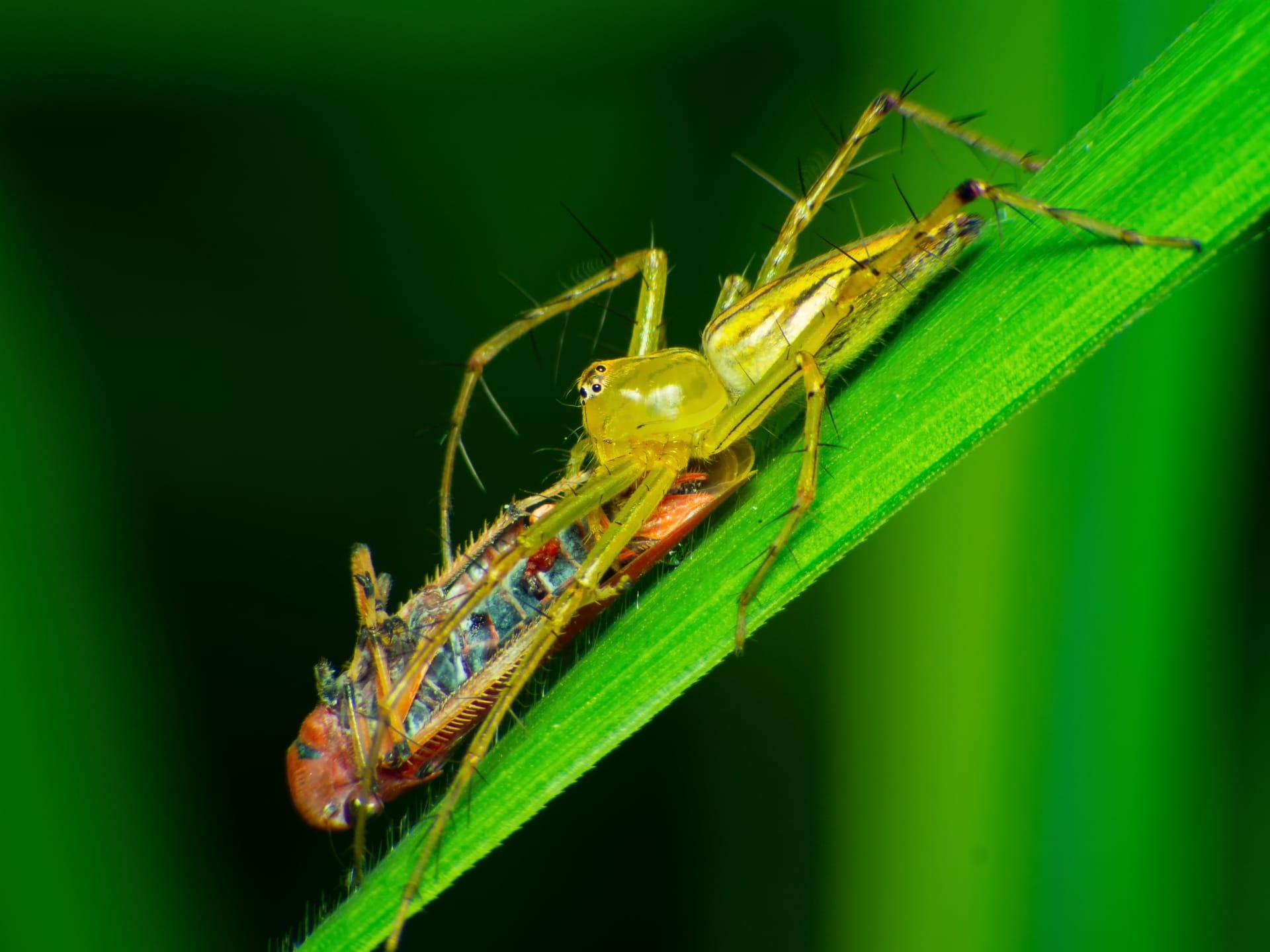Green Lynx Spider Characteristics
- Home /
- Mini Encyclopedia /
- Animal /
- Green Lynx Spider Characteristics
1
The Green Lynx Spider, scientifically known as Peucetia viridans, is a fascinating creature with unique physiological features. Typically, these spiders measure around 0.5 to 0.8 inches (12 to 20 mm) in length. Females are generally larger than males, often sporting a more vivid green hue. These arachnids have a lifespan of about one year, which they spend mostly in warm, vegetative environments.
One of the most remarkable organs of the Green Lynx Spider is its spinnerets, the silk-spinning apparatus located at the rear of its abdomen. Unlike many other spiders, the Green Lynx Spider uses its spinnerets not only to create webs for shelter but also for capturing prey. This spider can produce a silk that is incredibly elastic and strong, allowing it to create a variety of structures, from egg sacs to intricate trap lines for hunting.

2
Question: Do Green Lynx Spiders pose a threat to humans?
Answer: Generally, the Green Lynx Spider is not considered dangerous to humans. While they do have venom, it is primarily used to immobilize their prey, and it is not harmful to humans except in rare cases of allergic reactions. Their bite might cause mild irritation or redness but is not medically significant. It's important to remember that, like most spiders, they prefer to avoid humans and will only bite if threatened or provoked.

3
The Green Lynx Spider exhibits fascinating movement characteristics. It is known for its agility and speed, capable of making quick, accurate leaps to capture prey or escape danger. These spiders do not rely on webs for capturing prey but rather use their speed and jumping ability to hunt.
In terms of feeding, these spiders are primarily ambush predators. They often wait patiently on plants or flowers for unsuspecting insects to come within range. Once their prey is close enough, they pounce with remarkable speed and precision. Their diet mainly consists of various insects, including flies, bees, and sometimes even small moths.

4
Green Lynx Spiders thrive in warm, vegetative environments. They are commonly found in fields, gardens, forests, and occasionally in greenhouses. These spiders prefer sunny places with abundant plant life, which provide excellent hunting grounds and camouflage from predators.
The reproduction of Green Lynx Spiders is another intriguing aspect. The female lays eggs in a silk sac and aggressively guards them until they hatch. She may lay up to several hundred eggs in one sac. The mother's protective nature is so strong that she will often go without food to safeguard her offspring, showcasing a remarkable level of parental care.

5
Book: "The World of Spiders" by W. S. Bristowe, published in the UK in the mid-20th century. This comprehensive guide covers various spider species, including the Green Lynx Spider. Bristowe, a renowned arachnologist, provides detailed insights into the behavior, habitat, and physiology of these fascinating creatures.
Book: "Spiders: The Ultimate Predators" by Stephen Dalton, published in the UK in the early 21st century. This book focuses on the predatory aspects of spiders, including the Green Lynx Spider. Dalton combines stunning photography with informative text, offering a unique perspective on the hunting strategies and adaptability of these remarkable arachnids.